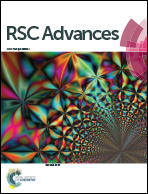The effect of transmembrane pressure and feed flow rate on transgalactosylation of lactose in an enzymatic membrane reactor
Abstract
Lactose hydrolysis and transgalactosylation catalyzed by β-galactosidase are important for the production of galacto-oligosaccharides (GOS). These reactions were performed in an enzymatic membrane reactor (EMR) with β-galactosidase immobilized on the inner lumen of the membrane. The effects of hydrodynamic parameters of transmembrane pressure (TMP) and nominal feed flow rate on the reaction were investigated. The rate of GOS formation increased as TMP was increased from 0.2 bar to 0.5 bar and then decreased as the TMP was further increased to 0.8 bar. In contrast to that of GOS, the formation rate of monosaccharides significantly decreased at high nominal feed flow rates. The separation factor between GOS and monosaccharides increased at high TMP, but the overall permeation flux decreased because of the high membrane resistant coefficient of membranes with immobilized β-galactosidase. Moreover, the specific productivity of trisaccharides was higher, whereas that of tetrasaccharides was lower in the EMR than that in batch reactor systems.


 Please wait while we load your content...
Please wait while we load your content...